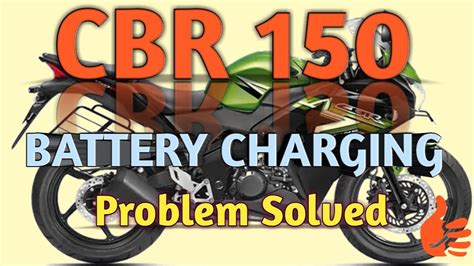Common Motorcycle Battery Charging Problems Solved
Keeping your motorcycle battery topped up is crucial for a smooth ride. A dead battery can leave you stranded, and diagnosing charging issues can feel like a daunting task. This article breaks down common motorcycle battery charging problems and offers practical solutions to get you back on the road.
Why is My Motorcycle Battery Not Charging?
This is the most common question motorcycle owners ask. Several factors can prevent your battery from charging effectively. Let's explore some of the most frequent culprits:
1. Alternator Issues:
This is often the root of the problem. The alternator is responsible for generating electricity to power your bike and recharge the battery. Several problems can affect its performance:
-
Faulty Alternator: A malfunctioning alternator might not generate sufficient voltage, preventing the battery from charging. This could be due to worn-out components, internal shorts, or damage to the stator windings. Testing the alternator output voltage with a multimeter is essential for diagnosis.
-
Loose Connections: Corrosion or loose connections at the alternator's output terminals can significantly hinder its ability to supply power. Inspect these connections closely and clean them with a wire brush if necessary.
-
Broken or Damaged Wiring: Damaged wiring between the alternator and the battery can interrupt the charging circuit. Check for fraying, broken wires, or loose connections along the wiring harness.
2. Voltage Regulator Problems:
The voltage regulator controls the output voltage of the alternator. A faulty regulator can lead to:
-
Overcharging: Excessive voltage from a malfunctioning regulator can damage the battery and other electrical components.
-
Undercharging: Insufficient voltage prevents the battery from receiving adequate charging current.
Testing the regulator's output voltage is crucial to diagnose this issue.
3. Battery Problems:
Sometimes, the problem isn't with the charging system, but with the battery itself:
-
Sulfation: Sulfation is a build-up of lead sulfate crystals on the battery plates, hindering its ability to accept and hold a charge.
-
Internal Short Circuit: An internal short circuit within the battery can drain it quickly and prevent it from charging effectively.
-
Cell Failure: One or more cells within the battery might have failed, preventing it from holding a charge.
A battery load test will determine the battery's health.
4. Bad Battery Connections:
Even with a fully functioning charging system, poor connections can prevent proper charging.
-
Corrosion: Corrosion on the battery terminals and cables restricts current flow. Clean the terminals thoroughly with a wire brush and baking soda solution.
-
Loose Connections: Loose connections, even slightly loose, can hinder the current flow. Ensure all connections are tight and secure.
How Can I Test My Motorcycle's Charging System?
Testing the charging system requires a multimeter. Many online resources provide detailed instructions on how to test the alternator output, voltage regulator output, and battery voltage. Safety is paramount. Disconnect the battery's negative terminal before performing any tests.
What Should the Voltage Be on My Motorcycle Battery?
The expected voltage will vary depending on the bike and battery type. Consult your motorcycle's owner's manual for the specific voltage specifications. However, generally, a fully charged motorcycle battery should read around 12.6-13.2 volts.
My Motorcycle Battery is Still Not Charging After Troubleshooting – What Now?
If you've checked all the above and the battery still isn't charging, you may need to seek professional help. A motorcycle mechanic can perform a more comprehensive diagnosis and repair or replace the faulty components.
This article provides a general overview; always consult your motorcycle's service manual for specific troubleshooting steps and voltage specifications. Remember to prioritize safety when working with electrical components. Proper maintenance, including regular battery cleaning and testing, can help prevent charging problems and keep your motorcycle running smoothly.

